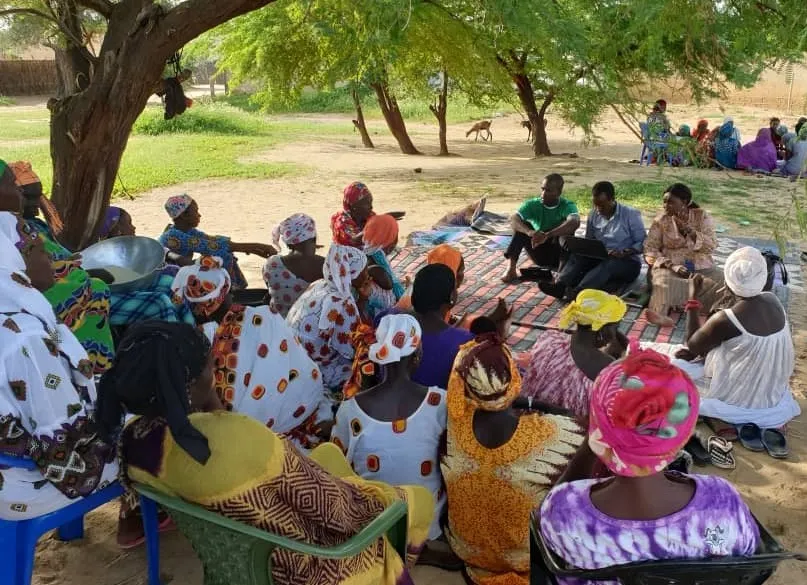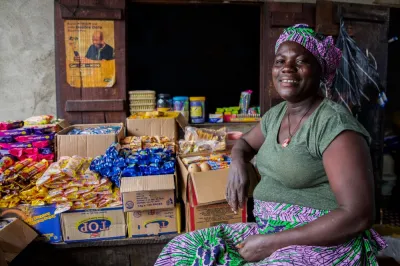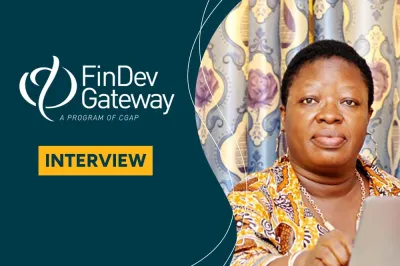Beyond Green Finance: Client-Centric Strategies for Climate Adaptation and Resilience

Climate and nature crises are threatening the way we live. Economic losses caused by climate change amounted to $1.5 trillion in the last decade alone (2010-2019), and are projected to grow to a yearly $1.7 to $3.1 trillion by 2050. The least developed countries will be the most affected. Those who are most exposed and vulnerable to climate crises will need to build resilience – and fast.

Green inclusive finance has emerged as a trend to do just that, but unfortunately, scalable success stories are scarce. We are still trying to solve new problems with old solutions, focusing on a project logic instead of a transformative transition. The problem is, we don’t yet know enough. The underlying causes and dynamics leading to the climate and nature crises are complex, making it difficult to identify potential solutions. And ultimately, we do not really know how the most vulnerable can best adapt and build resilience.
Having said all that, there has never been a better moment in history to figure it all out and make the much-needed transition towards regenerative economic systems. We have access to more data, better and more affordable information and communication technology solutions to harness that data, and a more motivated, globally connected community of people genuinely searching for transformative answers and solutions, than ever before. Governments and investors are increasingly shifting their focus towards climate and nature adaptation and resilience.
Limited solutions to limitless risks
At YAPU Solutions, we have helped facilitate over $200 million in adaptation and resilience finance across Latin America and Africa with over 80 financial institutions. Through this work, we have learned that the most pressing need for financial inclusion going forward is to focus on resilience for the most vulnerable populations. This approach is the most client-centric and comprehensive.
But building resilience is always context-specific, so there are no “one-size-fits-all” solutions which can be replicated at scale. We only have a limited range of known solutions to a limitless range of end client realities. This is why we must keep learning, developing learning systems that enable us to analyze and understand site-specific and individual realities.
Five key steps for helping clients build resilience
For financial institutions to really move forward in helping their clients build resilience, we recommend the following five key steps:
- Define gender-responsive resilience strategies, not green finance strategies. The resilience concept encompasses green finance but puts the client’s benefits first, especially in socioeconomic terms. In contrast, “green finance” implies a focus on environmental benefits which puts common goods, such as ecosystems or water resources, first. However, we cannot make the most vulnerable responsible for solving problems they did not cause.
To provide the conceptual framework and clarity needed, these strategies should target key performance indicators (KPIs) according to leading standards, such as the Agenda 2030’s SDGs, the Sharm Adaptation Agenda outcomes or the Race to Resilience metrics. And to provide the information needed by funders, financial institutions should follow standards such as the Climate Bond Initiative’s Resilience Principles and Taxonomy. - Dive deep into the local context. We need a comprehensive understanding of an individual client’s context – what risk is she facing, what solutions are available in her local markets and are they applicable to her activities and assets? How do these solutions mitigate the identified risks? Build taxonomies and compendiums of locally led and available solutions that increase the resilience of the most vulnerable. Analyze them on their potential to build different dimensions of resilience. And constantly monitor and document their impact, positive as well as negative or unintended. With digital solutions, only marginal additional effort is needed!
- Hence, go completely digital and use all the data you can get. Digitize each and every area of operations – especially when collecting data on end customers’ reality. For adaptation or resilience finance to work, you need to measure client-level risks, determining the probability of occurrence and potential impact of shocks for each client. Big data will enable you to understand the big picture as well as to identify the small local solutions. As you build climate profiles for thousands of customers, analyzing the adaptation solutions they apply and linking their adaptive capacity to their performance, you will be able to see which adaptation and resilience solutions render the best results.
- Actively manage and periodically analyze your data. Constantly map, measure and analyze the vulnerabilities and adaptive capacities of your target clientele. Use this data to refine your taxonomy compendiums, adjust your products and services and refine your resilience strategy. Using data in such a thorough way will allow you to integrate resilience considerations into 100% of your operations and help you to learn and adapt constantly.
- And finally: share your lessons learned and insights generated. You will learn a great deal from this wealth of climate resilience data. Share it with your target customers! They will be able to transform insights into action much better than you can. You can also use these insights to inform marketing and awareness-raising campaigns or product development. At the same time, this sharing of information will increase transparency on impact and attract greater funding flows towards resilience.
The key is to get started now in addressing this challenge. Take the first step of applying available technological solutions. Learn and share your learnings as you move towards a more resilient future.


